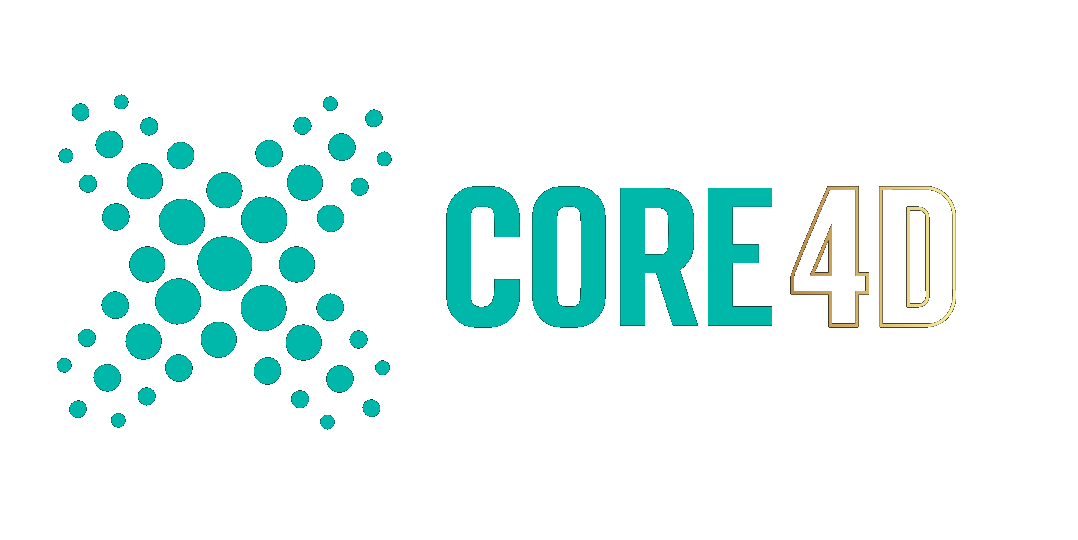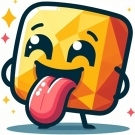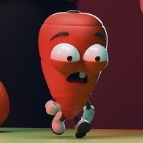Leaderboard
Popular Content
Showing content with the highest reputation on 05/08/2023 in all areas
-
(Probably my first original 3D article) This is a list of 10+1 useful yet overlooked or unappreciated features in C4D. 10) Scene Nodes Scene Nodes made their debut with R23 as an experimental feature drawing developer resources resulting R23 and the next couple of releases deprived from any major features. Due to its unusual for C4D UI, workflow and intuitiveness standards most users tried to stay away from it in a “let others figure it out first” response. None-the-less Scene Nodes are here to stay despite many people’s beliefs it would soon flop. Now many users do not hesitate to use Capsules but still quite few will spend time making their own, propagating the belief that SceneNodes maybe are not that powerful to produce what they expect or compete with other systems like Blender’s GeoNodes or Houdini. The Truth is that behind the scenes more and more people are working with SceneNodes and soon tutorials and new Capsules will be popping more frequently as witnessed with the last couple of releases. 9) Polygon Reduction This little generator is rarely used. Due to its name and function most users will rarely even considering using it because “Who wants to compress their geometry in a pile of ugly mess anyway, especially when Remesh is around to do it better”. Actually the Polygon Reduction can come in handy in abstract modeling, weird animations and my favorite: as an indirect uniform instance distribution. Polygon Reduction has a useful Preserve 3D Boundaries option. So when the Object Surface distribution mode of a Cloner fails to satisfy and you end up hitting the Seed value for half an hour to land a distribution where you don’t have intersecting instances, try to populate your surface uniformly use the Polygon Reduction as an instance in Vertex distribution. If the scale of your instances is not an issue throw a Push Apart Effector. 8 ) Sculpting Although not as powerful as ZBrush is, if you don’t want Forger because you don’t work on a tablet or don’t want a subscription to ZBrush, then this is your best alternative. It includes all the essentials for sculpting plus many advanced tools. It’s a quite complete tool case. Probably the most invaluable feature is to turn your sculpts to a Displacement Texture using the Bake Sculpt. Blender boasts its recent 3.5 release about its VDMs (Vector Displacement Maps) after ZBrush later this year made it possible to copy sculpted details as brushes and reuse them while C4D had it all along since R15. Plus the very useful and overlooked Projection tool. Which can also project tubed meshes ! 7) Camera Calibrator Tag This is another tool most users haven’t ever used myself included. It is used for Camera Mapping and provides many useful parameters and options for a quick camera placement from a reference image. It’s basically the equivalent of Motion Tracker but for still images. 6) Tension Tag The Tension Tag is placed in the Character Tag menu so most users that aren’t concerned with Character Rigging overlook it and don’t know it can also be used for modeling. Although you can achieve the same effects using the Displacer Deformer, the Tension Tag is more preferable for animations when the amount of deformation of a polygon from its initial state alters the Weight Map of the object allowing for local effects on regions of structural stress. Try doing this Reaction Diffusion without Fields! I think it’s faster too. And we have the Tension Tag to thank for this since R17 (I think). 5) Feather Object Right in the middle of this Top 10 list lies the Feather Object. I don’t just rarely see projects that use feathers. I’ve just never seen any feathered projects ever. And I’ve never used that object myself either! I might have seen a scene or two during MAXON’s demo showreels but you never know what percentage of those scenes are C4D. It’s a quite interesting generator with many parameters carefully designed to model any type of plume. It’s also a generator that doesn’t work on geometry like the Hair object but on guides. It essentially generates guides for guides. So if you want to turn any hairy model into a feathered model just put the Hair object under the Feather oblject! (also works for splines) 4) Instance Object Who uses Instance objects, right? Cloners create instances themselves by default why should I need an Instance object ? Maybe it’s used only when you turn a Cloner to an Editable Object. The truth is that the Instance Object can make your scenes a lot lighter when you don’t use a Cloner yet you do use a lot of copies of the same objects. Most users overlook it because the first thing that comes to mind when you need a lot of something is to clone it with the Cloner. Probably the Instance Object is what makes the Cloner work in stealth mode. I'll let the Master Shapiro show you one practical use of this object. 3) Smoothing Deformer Oh the Smoothing Deformer! With a bent tube as an icon (a flat iron R25+), it doesn’t really excite. Also the name doesn’t excite either. Usually users when they want to smooth things out they’ll use the Subdivision Surface generator (SDS). But what if you don’t want to increase the number of your polygons? Yes you guessed right. But wait, what are the Relax and Stretch modes? Stretch will try to maintain the overall shape and volume of your object. So any hard edges will be preserved while polygons try to be of homogenous area. The Relax is the most interesting one. People ask all the time how to make stills with realistic cloth wrinkles and will resort to cloth simulations or even sculpting… Look no further, this is your salvation! With just a few mindless brushstrokes with the Brush tool this deformer will blow your mind. 1) Plane under SDS. 2) Plane without SDS, just play with the Brush (Mesh->Transform Tools [M~C]), 3) SDS again 4) Just apply the deformer in Relax Mode. 2) MoSpline Turtle My favorite. MoSpline is not a rare tool on users arsenal. Who doesn’t like those sexy curves, and the icon is the most elegant in the whole app (talking about the old one). But the Turtle mode is just absent from any C4D project I’ve ever seen. It’s like it doesn’t exist… I guess people see those unintelligible symbols and delete the poor tree before a virus turns C4D into Houdini. The Turtle mode is highly unappreciated. Although it does have room for improvement in its capabilities, what someone can achieve with it is quite impressive and there is no other way to do it (except maybe coding it in Python). Anyone with affection for fractals appreciates this tool. Unfortunately most people love only the colored Mandelbrot type fractals. Line fractals deserve some love too! 1) XPresso Well, what did you expect? Although a lot of users do use XPresso, still very few are well knowledgeable with it. Most users relate XPresso only with Thinking Particles and this is the main reason most users resent XPresso, because it doesn’t deliver easy, fast and intuitive particle setups. There are also many shady corners in XPresso that are rarely used in scenes so most people don’t know how they could even be used. What for should someone use Dynamics nodes or Hair nodes ? Who knows ? Anyhow, XPresso is very powerful tool if you know how to use it, and it has an overlooked cousin feature the Driver Tag that developers made just for those who don’t like XPresso. Bonus Feature Pyroclusters The most underappreciated feature ever. Today it’s totally outdated because we have Pyro. But if you don’t have RedShift or any VDB compatible renderer what will you do? Just look at those clouds! 0 voxels, 0 GPU RAM needed. There are some preset shapes you can use like box and cylinder which I have no idea what practical purpose they serve but the Hemisphere can be used to see clouds from below. The downside is that you don’t have the flexibility Pyro offers because you need a particle setup, and sometimes particles are not enough so you have to use Thinking Particles which leads us back to XPresso. Other limitations follow like that they are not compatible with VDBs because they use apperceptive 3D shading algorithms instead of voxels, so you can’t export them to an other application and that PyroCluster does not work in conjunction with the depth-of-field functionality. Other than that, if you work natively, Pyroclusters can provide some comfort when you need some fluffy clouds or smoke. This is a special case of under appreciation because people do not appreciate the ingenuity used for this one-of-a-kind feature. I should be making a YT video 🤔3 points
-
Hello, The UV projections occupied my mind for quite a while, I made some tools to unwrap them, to make the edition easily, add features to BP UV Edit... But the problem was still the same, the UV edition is still boring to do and quite often we prefere to use the common automatic projections when it's possible. I was wondering, could we simply make other kind of projections to fit more shapes ? So I came up with a new plugin, the UV Projector ! It works like a deformer object and only edit the UVW property, it have some interesting new UV projections with the advantage to not have to make the object editable ! Here is some new projections : Rhombicuboctahedral : It's like a cubic projection with the 45° edges. Cylinder with deformations : Like the classic cylinder, with deformations to adjust the shapes. Half-cylinder : Some times you want to have only one side round and the other side plane. Y shape : It's maybe still a bit wobbly to setup but it gives a nice start. The last is I think the most interesting, it's a plane shape with editing points : Simply uset he point mode to move the surfaces points and adjust them to your object, you can literraly wrap it around your object ! All the features and download here : https://code.vonc.fr/projecteur-uv The free version is limited to 1000 polygons count with all the features so you can still enjoy it. The plugin is a part of the Vonc Suite that contains others tools. If you have other projections shapes ideas don't hesitate !1 point
-
Well, it's a Bank Holiday, and I have been rained off all the exciting electric unicycling plans I had, so I remain in my modelling cave, with some rare personal project time on my hands ! So, I thought, let's find something exciting to model, like THIS lovely recurve riser from Hoyt, the Formula XD. Should be a good exercise in hybrid HS / SDS techniques, and working with slightly sketchy reference, as there are almost no orthographic views of this available. Not to worry, we shall prevail regardless... As well as the main riser section, there is a lot of acoutrements / auxillary items to model here, most of which are very topologically, not to mention topographically interesting, for example this proprietary bit, where the risers meet the limbs... ...and the balance bars / aligment aids / sights, clickers, arrows, limbs, slings, harnesses and fixings, and I'll try and get most of them... I'll do a number of posts and videos during the modelling of this on the off-chance it is useful to anyone else... As a little teaser I have started with the clicker block, thusly.... What do we all think is the best way to start something like this, where we need very smooth curves and very sharp machined edges, and a lot of it is flat, but we also need varying bevels and an ultra smooth 'bullet cutout' going through the roundy triangle holes ? It must be suitable for displacement because there are sight marks and a logo which are etched into it. CBR1 point
-
with the tongue there and the teeth it tends to be enough to get the inside of the mouth in shadow, as the main lightsource isn't hitting the mouth area strongly enough to illuminate the inside of it, it does become a bit of a problem the bigger the mouth though especially if it's open fairly wide. in some cases i'll use a flat black material with no reflection/specular applied to the inside or use a seperate light with a negative value just for the mouth cavity to add shadow to it instead of light. Conversely it can be just as much of a pain to get it nicely lit as it can be to get it nicely shadowd1 point
-
I have R20 and people sharing their projects with 2023.2 work just fine if they don't contain any later generators like Pyro, Mesher, SceneNodes or Rope/Cloth simulations. You should move on soon though because there's a pattern where every 5 years the compatibility with older versions is cut off due to significant changes on many features.1 point
-
I will just for example look at the situation with materials. back then you had one renderer, that was completely stringent in its usage. then physical came. and maxon tried hard to implement it deeply. It was usable with the same UI, but even back then things started to get a bit strange with the reflectance chanel, which was and still is a whole material system on its own in one chanel of an other material system. then we got a node based Material system with a complete new Node UI, that was not integrated with the old layerbased. Xpresso still has the old UI and redshift that maxon bought has a material node system that can be used in the old expresso style system and in the new node look depending on what material you create. You can say, that technology changed and that different renderers have different strength and weaknesses, and you are right, but all of these renderers have diffusion, emission, alpha, transparency and many more channels that they share and they have the same values to control but they all have different user interfaces. that means, that you have to learn different workflows to get the same result.1 point
-
This is an awesome list of overlooked features. You're usage of the Polygon Reduction tool is interesting, also I have never tried the sculpting projection tool. Thanks @HappyPolygon1 point
-
Yes you should !! I would like to add 'Edge to Spline' and the new Relax mode of the Brush tool, which can relax and improve loop evenness / integrity without shrinking the mesh. And at last, the new Thicken tool, which means we don't need to use the previous range of un-optimised compromises like Cloth SDS and Extrudifier. CBR1 point



